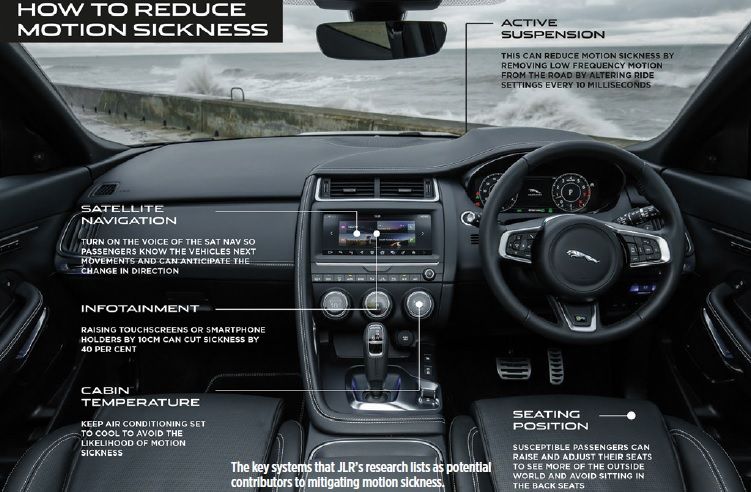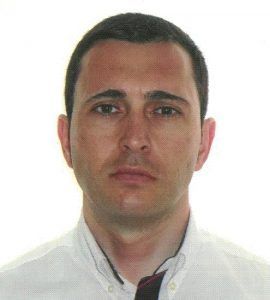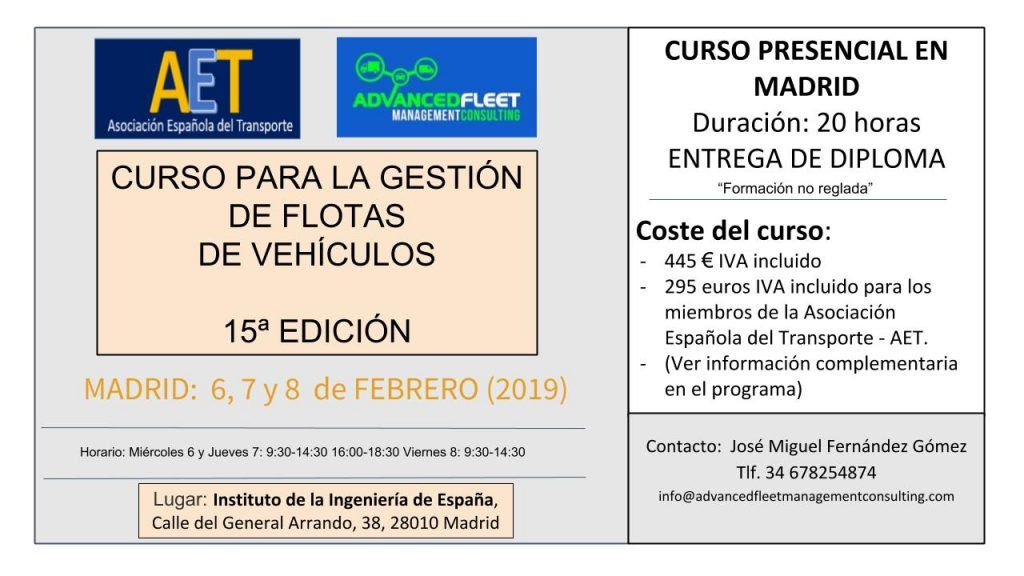
Como reducir el riesgo por cansancio-malestar en la conducción usando tecnología
Jaguar Land Rover (JLR) has revealed that a specialist “wellness research” team has created an algorithm to help reduce vehicle motion sickness by up to 60%. The algorithm generates a “wellness score” for each passenger. When it detects changes in the score it can automatically initialize personalization of both vehicle dynamics and cabin settings to reduce the effects of motion sickness.
Dr. Steve Iley, JLR’s Chief Medical Officer, described the research’s “solid scientific foundation” as having created a solution regardless of an individual’s susceptibility to travel sickness. Young children are most likely to suffer symptoms: “I am particularly excited by the benefits this research can have in making long journeys comfortable and stress-free for families.” Linking systems A key member of the research team is Spencer Salter, a JLR engineer who uses comprehensive modeling specifically to achieve pre-emptive solutions within dynamic systems. A further link embraces satellite navigation systems that can support “optimum wellness routes” that take into consideration speed, journey time and distance.
JLR’s wellness score is compiled using biometric sensors to record physiological signals together with motion and dynamics data which together are designed to signal a potential motion sickness event, even before the vehicle occupant will be aware of it. The research work has so far involved some 15,000 miles, enabling the JLR team to establish a baseline driving style as a target for autonomous applications. A particular aim is to minimize steering corrections and unnecessary inputs.
Information correlation Salter said that little had previously been known about causes of motion sickness and how to prevent or reduce it, despite the fact that up to 70% of vehicle occupants are estimated to be affected. What is known is that the problem may occur when a vehicle’s occupant’s eyes observe information that does not correlate with information sent to the brain via the inner ear, skin, and forces on the body. This happens particularly when reading –something that autonomous-vehicle travel will increasingly allow.
The first phase of the anti-motion sickness research program is scheduled to be completed by late November and JLR states that the findings to date are already being implemented into further research projects.
Source: Automotive Engineering
Automotive Engineering magazine is the No. 1 resource for engineers across multiple disciplines in the automotive industry. Published 10 times annually, Automotive Engineering engages decision makers who buy and specify product. Each issue includes special features and technology reports, from topics such as: vehicle development and systems engineering, powertrain and subsystems, environment, electronics, testing and simulation, and design for manufacturing.
 José Miguel Fernández Gómez, es experto en gestión de flotas de vehículos, y el director de Advanced Fleet Management Consulting que suministra servicios de consultoría en gestión de flotas de vehículos
José Miguel Fernández Gómez, es experto en gestión de flotas de vehículos, y el director de Advanced Fleet Management Consulting que suministra servicios de consultoría en gestión de flotas de vehículos
 ]]>
]]>
